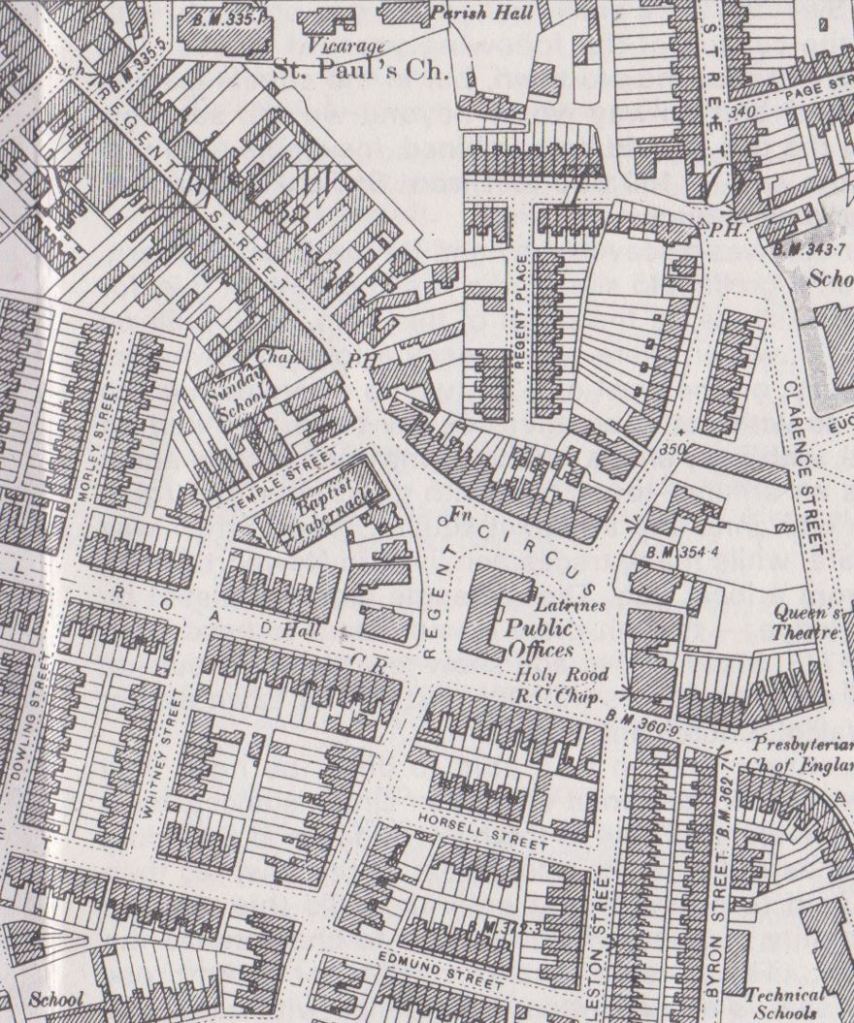It cannot be denied how important the growth of Primitive Methodism in Swindon was to the development of the town itself. It has been argued that nonconformity arrived in Swindon with the establishment of the Great Western Railway as railwaymen came from across the country bringing with them a tradition of working class, chapel attendance, but this is not the whole story. Evidence of nonconformity was present in the area long before and in 1924 the Primitive Methodists celebrated the Centenary of the Brinkworth and Swindon District Synod.
By 1828 there was a growing Primitive Methodist membership in what was then known as Eastcott, an area around where Regent Circus would later be built. Open air meetings were delivered by travelling preachers until a plot of land was gifted by Thomas and James Edwards in fulfilment of their father’s bequest. It was here, on what would later become Regent Street, that the Primitive Methodists built a chapel.

Charles Morse, a pioneer of Primitive Methodism in North Wiltshire, said ‘that it was like building a Chapel in some foreign land, scarcely a house was near, there was a road through the field, but not a stone to be seen upon it.’
Rev. G. Pilgrim, Minister of the Newport Street Congregational Church, attended the inaugural meeting and he commented that there were very few people there, and of them the greater part were old women and he was at a loss to know how the Primitives were to build a Chapel and pay for it.
But build it they did, and what’s more they rebuilt twice more as their membership grew and out grew three buildings. The first modest chapel was demolished and rebuilt in 1863 followed by a third Chapel providing accommodation for 600 built in 1876 at a cost of £3,110.

The Regent Street chapel became the parent church of the Second Circuit. However, its situation on Swindon’s busy shopping street became increasingly problematic. Sadly, it was demolished in 1957, its funds used to improve other Methodist churches in Swindon.

A public health report and an urgent need for burial space in the rapidly developing town along with the growth of nonconformity contributed to the building of a new cemetery in 1881. Now the nonconformists could bury their loved ones without the strictures or rites of the established church. Radnor Street Cemetery, an area of unconsecrated ground, became the last resting place of some notable nonconformists including Mayors, Councillors and Alderman alongside others who worshipped in the numerous churches and chapels. You might like to read more by following these links …
I really enjoy theses articles, have they or are to be published in book form?
Many thanks
Pat Thomas
LikeLike
Hi Pat – thank you for your kind comment. The articles are not available in book form nor are there any plans to publish, but thank you for making the enquiry. I’m glad you enjoy reading them.
LikeLike
I attended Regent St. Methodist Sunday School from the early 40s until it closed !
LikeLike
I’d love to hear your memories. Thank you for commenting.
LikeLike